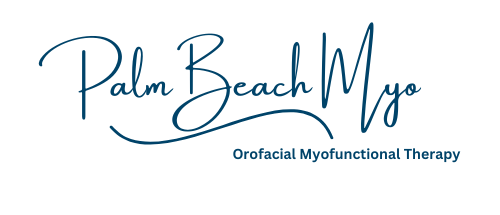The Incredible Melting Face: How Mouth Breathing Reshapes Facial Development
Introduction
Facial development is a dynamic process influenced by genetics, muscle function, and environmental factors. One of the most overlooked yet impactful influences on facial growth is breathing patterns—specifically, whether a person primarily breathes through their nose or mouth.
Dr. William M. Hang, a leader in airway-centric orthodontics, has extensively documented how mouth breathing disrupts normal facial development, leading to significant structural changes over time. These changes can result in a "melting" appearance of the face, characterized by elongation, narrowing of the dental arches, and an overall imbalance in facial proportions.
In this blog, we’ll explore how mouth breathing affects facial growth, oral posture, and airway health, and why addressing it early—through nasal breathing training and myofunctional therapy—is essential for optimal facial and airway development.
How Mouth Breathing Affects Facial Development
According to Dr. Hang and other airway-focused researchers, chronic mouth breathing alters muscle function and facial growth in several key ways:
1. Facial Elongation & Narrowing of the Jaw
The tongue plays a crucial role in shaping the upper jaw by applying pressure to the palate (roof of the mouth).
When breathing through the nose, the tongue rests on the palate, promoting proper arch expansion and balanced facial growth.
With mouth breathing, the tongue sits low in the mouth, failing to support the upper jaw. This leads to:
✔ A narrow, high-arched palate
✔ Longer, flatter face shape
✔ Poor jaw development, often resulting in crowded teeth
2. Retracted Chin & Weak Jawline
When the mouth is constantly open, the jaw remains in a lowered position, preventing proper forward growth.
This can lead to mandibular (lower jaw) retrusion, where the jaw grows backward instead of forward, giving the appearance of a weak chin and underdeveloped lower face.
3. Sunken Cheeks & Dark Eye Circles
Chronic mouth breathing disrupts circulation and lymphatic drainage, leading to:
✔ Dark under-eye circles (allergic shiners)
✔ Poor cheekbone development, making the face appear sunken
✔ Nasal congestion and inflammation, further reinforcing the habit of mouth breathing
4. Poor Posture & Airway Collapse
Mouth breathing often accompanies poor head and neck posture as individuals compensate for airway resistance.
A forward head position (also known as "text neck" posture) develops, which further reduces airway space and can contribute to sleep-disordered breathing (SDB), including snoring and obstructive sleep apnea (OSA).
Dr. Hang’s Findings: The Case Against Mouth Breathing
Dr. Hang has demonstrated these facial changes through real-life case studies. In his well-known lecture, “The Case Against Mouth Breathing”, he presents images of a young boy who transitioned from nasal to mouth breathing due to chronic allergies.
Before & After: The "Melting Face" Phenomenon
Before switching to mouth breathing, the child had a balanced, well-developed face.
After years of mouth breathing, his face became elongated, his jawline weakened, and his upper airway space decreased.
This transformation underscores how a simple change in breathing patterns can profoundly affect facial structure.
🔗 Watch Dr. Hang’s lecture here: The Case Against Mouth Breathing
How to Prevent & Reverse the Effects of Mouth Breathing
1. Nasal Breathing Training
✔ Identify & Address Nasal Blockage – If chronic congestion is forcing mouth breathing, treating the root cause (allergies, enlarged tonsils, or deviated septum) is critical.
✔ Practice Conscious Nasal Breathing – Techniques like Buteyko breathing can help restore nasal breathing patterns.
2. Myofunctional Therapy for Muscle Retraining
Myofunctional therapy includes exercises to strengthen the tongue, lips, and airway-supporting muscles.
It helps correct low tongue posture and weak lip seal, restoring proper oral function.
Studies show OMT can improve airway stability and reduce the risk of orthodontic relapse (Camacho et al., 2015).
3. Early Orthodontic & Airway Interventions
Guided growth appliances like Biobloc and Myobrace encourage proper jaw development.
Early orthodontic evaluation (before age 7) can help identify airway and skeletal issues before they become severe.
Conclusion: Why This Matters
Facial growth and development are not just about aesthetics—they are deeply connected to breathing and overall health. The "melting face" effect is not inevitable; with early intervention, nasal breathing training, and myofunctional therapy, these structural changes can be prevented and even reversed.
If you or your child struggle with mouth breathing, orthodontic concerns, or airway issues, it’s time to take action.
📞 Contact Palm Beach Myo Today
🌐 Visit: www.PalmBeachMyo.com
📧 Email: palmbeachmyo@gmail.com
📍 Call: (561) 303-6004
Helping You Breathe, Sleep, & Live Better.
Cited Studies & References
Hang, W. M. (2017). The Case Against Mouth Breathing. Lecture Presentation.
Camacho, M., Certal, V., Abdullatif, J., et al. (2015). Myofunctional Therapy to Treat Obstructive Sleep Apnea: A Systematic Review and Meta-analysis. Sleep, 38(5), 669-675. PMID: 25348128
Guilleminault, C., Huang, Y.S., Monteyrol, P.J., et al. (2013). Critical Role of Myofascial Reeducation in Pediatric Sleep-Disordered Breathing. Sleep Medicine, 14(6), 518-525. PMID: 23545187
Villa, M.P., Evangelisti, M., Martella, S., et al. (2017). Can Myofunctional Therapy Increase the Effectiveness of Rapid Maxillary Expansion? The European Journal of Orthodontics, 39(6), 601-607. PMID: 28369485
Marchesan, I.Q. (2012). Orofacial Myofunctional Therapy in Orthodontics: A Systematic Review. International Journal of Orofacial Myology, 38, 1-10. PMID: 23362793
